Indy racing aside, the only solace Fernando Alonso has these days is that, whenever his Formula One car breaks down yet again, he'll soon be able to climb into his new company car and drive off, very quickly. The new McLaren 720S is everything the F1 division's MCL32 is not. It's class-leading on the straights. It's class-leading in corners. It's class-leading to drive and it feels bullock strong, everywhere, all the time.
A generation ago, McLaren launched its audacious programme to build a road-car business that could go toe-to-toe with Ferrari and still be standing at the close of the 12th round.
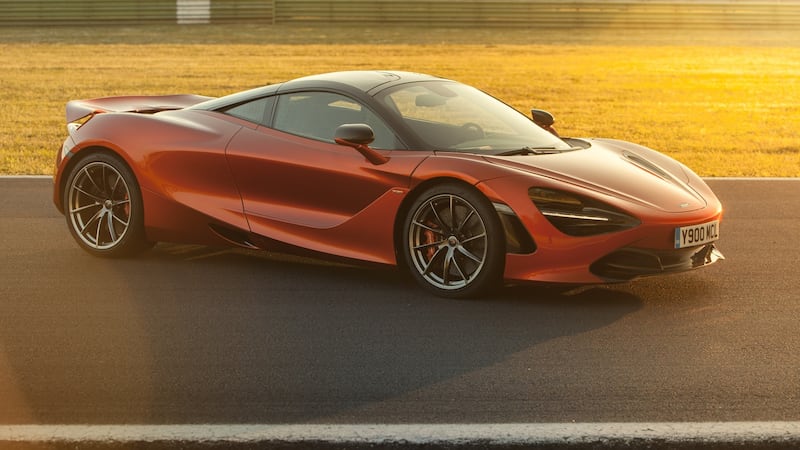
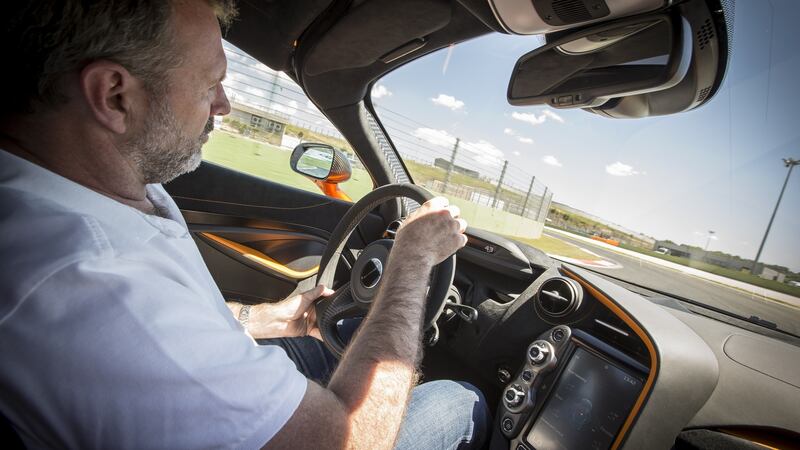
The MP4 12C became the 12C and a host of new models followed, all on the same core carbon-fibre chassis tub and all with the same core 3.8-litre, twin-turbo V8 engine.
McLaren is now on track to squeeze out more than 3,700 this year, 4,000 next year and it's just hit the biggest early milestone any emerging carmaker can hit. It's just delivered its first second-generation car. And it's already sold 1,400 cars, which is the full 2017 production run, and it thinks it will move 100 cars a year in Australia alone.
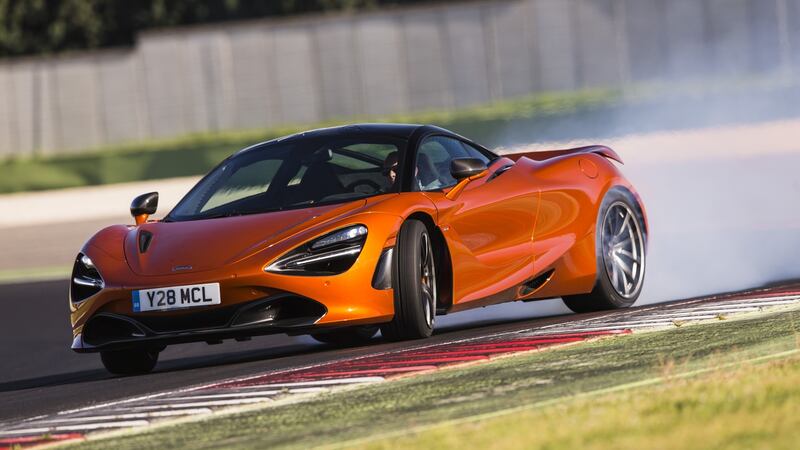
World’s best supercar?
The 720S is 91 per cent new and a well-known news item by now, but what’s not so well known is whether it’s any good. And it is. It’s a whole lot more than good, moving beyond even excellence to stop at sheer brilliance and flirt with perfection.
It is, right now, almost certainly the best, most agile, most coherent production supercar in the world, belittling both the Huracan and Aventador, surpassing the 488 GTB, superior to the 911 Turbo and disdainful of the Audi R8 Plus.
It all starts with a new carbon-fibre chassis tub, which now extends up and over the roofline, replacing the steel and aluminium of the predecessor, shrinking the thickness of the windscreen pillars and the C-pillars in the process.
Inside this, McLaren fits a revamped biturbo V8 engine, stroked out from 3.8 to 4.0 litres and slotted in 120mm lower in the chassis than before. McLaren claims more than 41 per cent of the V8’s parts are new, including the low-inertia, twin-scroll turbochargers, intercoolers, pistons, the crankshaft and the eight connecting rods. And it has gristle.
It soaks up bumps and ruts and potholes every bit as well as most mid-range commuter cars
All of its huffing and puffing gives it a full 530kW of power at 7,500rpm, which would be enough all on its own. A full 2,000rpm earlier than that, though, it’s thumping 770Nm of torque through the crankshaft. It’s a ferocious engine, full of phenomenal forces, delivering phenomenal numbers.
Sure, a 2.9 second sprint to 100km/h is pretty impressive, especially when it’s only the rear tyres that are doing the pushing. The second 100km/h chunk only takes 5.9 seconds (7.8 seconds from a standing start) and the third 100km/h bite is 13.6 seconds.
The 650S is no sloth, hanging on to the 720S’s coattails to 100km/h, but trailing away as the milestones tick by. It’s a tenth of a second behind the 720S at 100 km/h, but 0.6 seconds behind it at 200km/h (the Ferrari 488 GTB is claimed to be half a second slower to this mark, too) and a full four seconds slower to 300km/h.
Effortless brutality
But it’s the way it does it that’s impressive; the effortless brutality of it all at full throttle, in any gear, and then the almost comical calm tootling through traffic, like a thug whistling his innocence as he walks past the police.
More of that later, but McLaren completes the mechanical layout with a Graziano seven-speed dual-clutch transmission behind the V8 and then bolts both of them into the middle of the car, surrounding them with some of the most impressive suspension theatrics known to man.
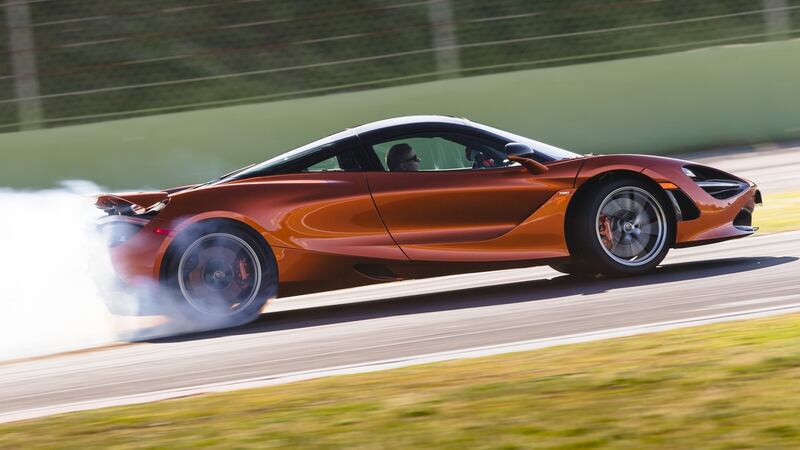
It spent six years developing an algorithm with the University of Cambridge to give its Proactive Chassis Control II suspension system the ability to ride the rough stuff in comfort and attack the track like a pro racer. Besides the wishbones all around, the car also has three accelerometers and sensors attached to the unsprung mass on each corner, to let it tune each damper individually on the actual input on its wheel.
McLaren claims the 720S, with its disturbingly dominant eyeball air intakes (to cool the transmission) above and below the daytime running light, is more than 100kg lighter than its equine-badged foe, but it’s hard to tell. It claims a dry weight of 1,283kg, which is ridiculous, frankly. It’s 1,419kg at the more realistic DIN calculation (with all of its fluids and 90 per cent of its fuel capacity), which leaves it 130kg lighter than the none-too-tubby 650S it replaces and 85kg lighter than Ferrari’s 488 GTB.
Rides like a mid-range commuter car
Externally, it has thinner dihedral doors, conceived to be easier to open in locked secure garages, and its full-width rear wing constantly adjusts its angle, up to 85 degrees to aid stability underbraking, making it quite the kooky thing to follow around a race track.
The first thing is, though, getting it out of Rome. Anybody who has driven in Rome understands what I mean. Anybody who hasn’t doesn’t understand the rule of the jungle, applied to roads. Yet the 720S has very good visibility, especially at the rear, where the glass panel inside the C-Pillar lets you see oncoming torpedo scooters long before they’re a problem.

You can also reverse it comfortably because you can see things outside the car from the driver’s seat and that airiness helps deliver a feeling of spaciousness when the two seats are actually closer together than before.
It also rides ridiculously well. Gone are the days when supercars broke your spine for spite masquerading as grip. The 720S shows it’s not necessary to do that anymore.
Instead, it soaks up bumps and ruts and potholes every bit as well as most mid-range commuter cars, while the torque makes moving through traffic an effortless thing to do. It is a disturbingly calm and easy car to work with on broken roads and even bigger speed bumps or ramps can be negated by lifting the nose at the push of a button.
Supercar for the masses
In spite of the performance numbers, this ability to be innocuous makes the McLaren approachable in a way never before encountered in a supercar. Driving it is a simple matter of using the roof cut-outs of the new, thinner doors to slide down with slightly more dignity than before, then hitting the start button, dabbing the “D” button down and stepping off the brake pedal.
Actually, it might not involve even that, because the brake pedal is hard and demands a lot of pressure to make the six-piston front callipers push their pads on to the 390mm front carbon-ceramic discs (the rear carbon-ceramics are 380mm). McLaren says the reduced initial servo assistance is to give the pedal a stronger, more faithful feel under track conditions (which it does), but you need a moment or two of adjustment when you come from just about any other car, otherwise the 720S will creep forward without you noticing.
It’s the only (very small) blemish in its urban copybook, because its comfort mode retains the car’s brilliant body control (though the rear suspension feels a bit squishy compared to the firmer front), the shifts are slinky smooth and the steering is so intuitive that it’s a standout, even at low speeds. The only downside on our car was significant tyre noise from the rear end.
Re-inventing ‘dynamic mode’
In the old days, a dynamic mode tied the entire car down hard for more speed. Ferrari stole a march on the sports car world by fitting its F430 with a soft-damping button that allowed it to run the powertrain in the hardest, fastest setting but the dampers in their softest mode, letting the car ride the bumps in a belated realisation that most owners didn’t live on racetracks.
McLaren has taken it further, with the three-step mode switch for the chassis completely separated from the three-step damping switch, with both rotary switches in pride of place next to the driver’s hand on the central panel and the audio controls rightly shuffled over to the lesser real estate.
The driving position is utter perfection, with a straight-ahead seat, adjustable steering height and reach, every button close and just the right relationship to the two carved alloy pedals down below. Also, every single piece that looks like metal is metal, often with exquisite knurling that leaves you unconsciously fingering them in the quiet urban moments for no apparent reason.
The chassis switch is highest, with Comfort, Sport and Track modes all helped by a steering system that remains old-school hydraulic, rather than electronically motivated, with all the good things that brings with it. But there’s more. McLaren still eschews limited-slip differentials in favour of brake steering (banned in F1) and clever electronics.
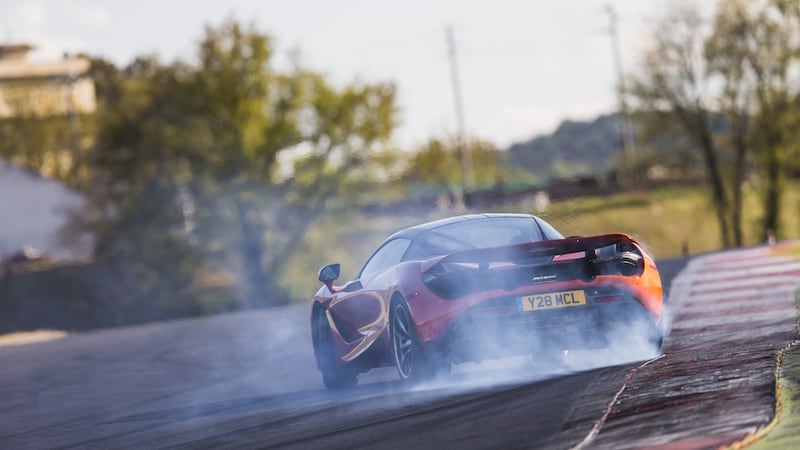
Dawdling is all well and good when it’s needed, but the first time you open the taps on the 720S on a lonely country road is a shock, even when you know the data inside out.
Expletives come as standard
The engine is so strong that even from a rolling start in second gear, a snapped throttle will also snap everybody’s thought processes, immediately supplanted by one expletive or, if my passenger was any guide, a series of them, with an increasingly quiet voice as the acceleration forced the air from his lungs.
It's astonishingly explosive, turning clearly static trees into panicked blurs of green and brown
For narrow Italian roads, the 720S is almost too fast and indeed it would be too fast if it wasn’t so controllable as a holistic machine. You can punch it to full throttle, but never for long.
It’s astonishingly explosive, turning clearly static trees into panicked blurs of green and brown and teleporting distant corners into the space immediately in front of the windscreen.
One significant flaw
But this exposes the one significant flaw in the 720S. They might have tuned the exhaust note to McLaren standards of musicality, but it still doesn’t deliver any warmth as its engine note rises to 8,000rpm, like Ferrari’s V8 biturbo motors do, or the saturating, exaggerated depth and brutality of an AMG V8. Instead, it’s smooth and it’s loud when you want it to be loud and it’s clearly sophisticated. It’s just not thrilling, but when it can hurl you up the road with this level of intent, it might not need to be.
The other part that makes the 720S incandescent is its handling package. Few other supercars have been this agile and just about none of them are as rewarding to the driver.
Best steering in the business
It starts with the best steering system in the business, giving the driver an intuitive, unadulterated, uncorrupted feel of what’s happening beneath the front end and reacting to the driver’s inputs in the same movement.
In slower corners, where it’s all about mechanical grip, the balance of the 720S is brilliant, and its ability to get all of its power down in second gear is truly astonishing from a rear-wheel drive car.
There is feedback aplenty from the rubber at both ends and the car has the brilliant ability to almost pull its drivers towards the best of their, and its, abilities. It’s not like a Ferrari, which teases and dares you to push it hard.
This car schools the driver without condescension and lets you sneak up on it until you’re pushing very quickly indeed. It helps that it contains a proper data logger that you can view on the central display screen in the dash, but it’s mainly because of its progression and its ability to slide controllably in Dynamic mode and to pool all of its resources in search of ever-greater speed.
How can they follow this?
It does frightening things without ever feeling frightening, blistering into fast bends with a trace of understeer and with its constantly variable rear wing angle giving it delicious stability under heavy braking and direction changes.
We whipped it into the start of Vallelunga circuit’s lumpy right-hand turn two at more than 210km/h and, while we were a bit busy to notice the speed on the way out again, it felt planted and stable, with just a wisp of front-end push until it stabilised the weight over the rear axle and fired out again.
It feels significantly quicker around a track than a 488 GTB, upset by nothing beneath it, and it’s a scalpel, rewarding accurate, nuanced driving with ever-greater pace in its hunt for authenticity as its core idiom.
It also has VDC, which McLaren calls variable drift control, except it isn’t. It isn’t a drift control as such, but a mistake catcher, because it won’t hold a slide on throttle. That’s probably no bad thing, because if it seems under control to the car, it will hold perfectly nice drifts in Dynamic mode anyway.
It lets you have lots of little tail wiggles, it rotates around its y-axis beautifully and controllably on both tight and fast corners and it carries some astonishing speed everywhere.
The only real questions McLaren faces now over the 720S are twofold: how to make it sound better and how to deliver the array of even-better performing models that will inevitably follow it.


















